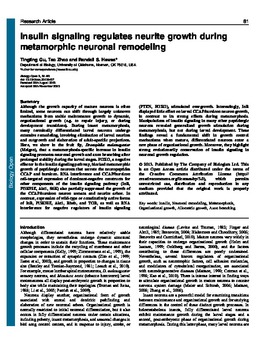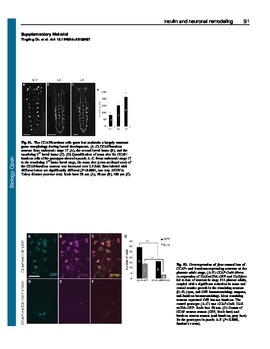| dc.description.abstract | Although the growth capacity of mature neurons is often limited, some neurons can shift through largely unknown mechanisms from stable maintenance growth to dynamic,
organizational growth (e.g. to repair injury, or during development transitions). During insect metamorphosis, many terminally differentiated larval neurons undergo extensive remodeling, involving elimination of larval neurites and outgrowth and elaboration of adult-specific projections. Here, we show in the fruit fly, Drosophila melanogaster (Meigen), that a metamorphosis-specific increase in insulin signaling promotes neuronal growth and axon branching after prolonged stability during the larval stages. FOXO, a negative effector in the insulin signaling pathway, blocked metamorphic growth of peptidergic neurons that secrete the neuropeptides CCAP and bursicon. RNA interference and CCAP/bursicon cell-targeted expression of dominant-negative constructs for other components of the insulin signaling pathway (InR, Pi3K92E, Akt1, S6K) also partially suppressed the growth of the CCAP/bursicon neuron somata and neurite arbor. In contrast, expression of wild-type or constitutively active forms of InR, Pi3K92E, Akt1, Rheb, and TOR, as well as RNA interference for negative regulators of insulin signaling (PTEN, FOXO), stimulated overgrowth. Interestingly, InR displayed little effect on larval CCAP/bursicon neuron growth, in contrast to its strong effects during metamorphosis. Manipulations of insulin signaling in many other peptidergic neurons revealed generalized growth stimulation during metamorphosis, but not during larval development. These findings reveal a fundamental shift in growth control mechanisms when mature, differentiated neurons enter a new phase of organizational growth. Moreover, they highlight strong evolutionarily conservation of insulin signaling in
neuronal growth regulation. | en_US |

